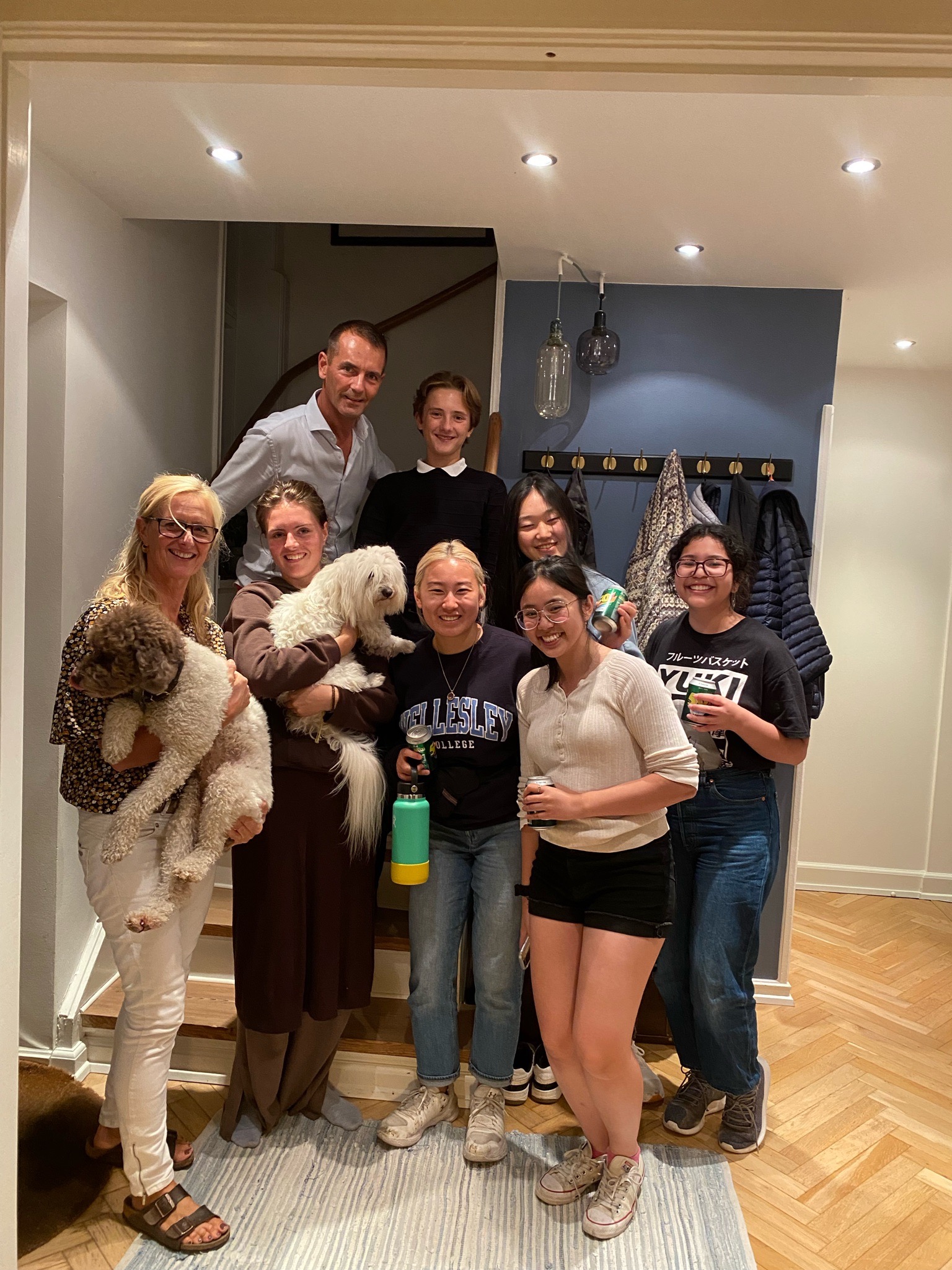
Homestay: A Second Hjem
Hjem (noun): [1] A place where you are always welcome and surrounded by those who love you [2] The story of who we are and a collection of all the things we love
When I think of hjem, I think of the skyscrapers in Chicago, a warm bowl of pho on a cold day, and of course, my friends and family in Chicago and college. And before coming to Copenhagen, I never thought I would be extending that list.
It’s been nearly two months since I have been living with a host family, and I can absolutely say that they have been the best part of my study abroad experience. It sounds like an exaggeration, but I can’t imagine how I would navigate this program without them.
Before I talk more about my homestay family experience, it’s important to know the housing options if you plan to study away through the DIS program. DIS offers living with a homestay family, a career connection homestay, the living and learning community, Kollegium, and a residential community.
If you want a full cultural experience and live with Danish locals, people tend to live with a homestay family. A career connection homestay is slightly different from a regular homestay where there is more focus on sharing your career aspirations with the host family because they should have a similar professional background that you might be interested in pursuing. Overall, you’d be living in a house owned by your host family. If you want to live with locals who are at a similar age as you, then a Kollegium is a good housing choice. If you want to live with only other DIS students then the living and learning community or residential community are perfect options. The living and learning community is slightly different from the residential community because it’s a space for those with shared interests (e.g. cooking, going outdoors, etc.) so there are many group activities for floor mates to do together regarding that specific interest.
For a while, I knew I wanted to be in a homestay. Because I would only be there for a semester, I wanted to be outside my American student bubble and be with locals. I also liked the idea of learning the Danish traditions and cultural context through locals rather than academic courses. And admittedly, I’m not great at cooking so I definitely needed support in meal prep.
So I ranked homestay as my first option and a few weeks later, I got an email from my homestay dad. I found out that I would be living with a host dad, mom, 17-year-old sister, 13-year-old brother, and 7-year-old dog. At that time, it was only a few weeks before my arrival in Copenhagen. I was extremely stressed with finishing work for my summer internship and packing for a whole semester, so I wasn’t in the greatest state when I FaceTimed my host family for the first time. Thankfully, they were nice and we essentially had a small chat about ourselves.
But I would be lying if I said I wasn’t terrified of living with strangers with who I could potentially not mesh well. I was also worried that I would be uncomfortable living with a white family as a person of color. After a good week transitioning into this lifestyle, I was happy with my choice.
When my host dad picked me up from the airport, something within me started talking and talking. I think my extroverted tendencies came out and so my host dad seemed surprised when I told him that I was an introvert.
I was surprised by how open and communicative my host family was toward me. Even when they were talking about personal schedules, something not relevant to me, they made sure to speak English so that I didn’t feel left out. I think what works well with my host family and me is how we are communicative with each other and that we are meeting each other’s expectations. I make sure to spend time with the family whether through family dinners, watching Brooklyn 99 with my host brother, or walking the family dog. They have been great at making conversations with me while giving me time and space.
I think being in a homestay has the most benefits out of the living choices at DIS. Not only am I living with an amazing host family, but they are also taking me to places or doing activities that are not super easy for a regular DIS student to go to or do. Recently, I went to a forest area in Sweden with my host family for the weekend. We did very mundane things like solving puzzles, playing card games, and watching Die Hard but it was one of my favorite weekends travels because it was relaxing and fun to be with them outside of Copenhagen (and that’s saying a lot since I’ve had amazing trips to other places in Europe). Because I live about 40 minutes away, DIS provides me with a commuter card. It’s super convenient because I can then travel the main parts of Copenhagen without having to buy tickets like other residential DIS students have to do. This means that I can have mini adventures on my own. Recently, I went on a spontaneous trip with my friend going around the main castles in Copenhagen.
My host family is the best part of my DIS experience, I can’t imagine where I would be without them. To Jerrik, Nora, Dyveke, and Carl-Johan: thank you for being my second hjem.
